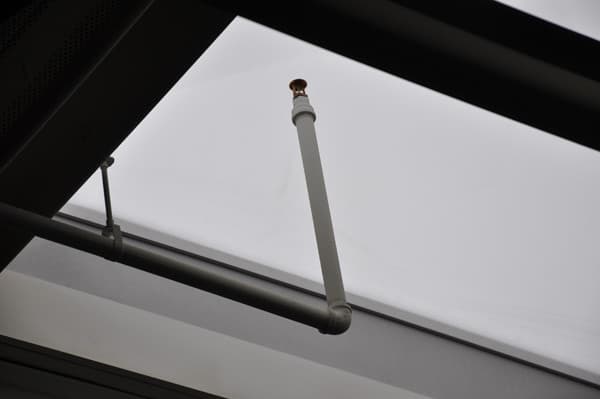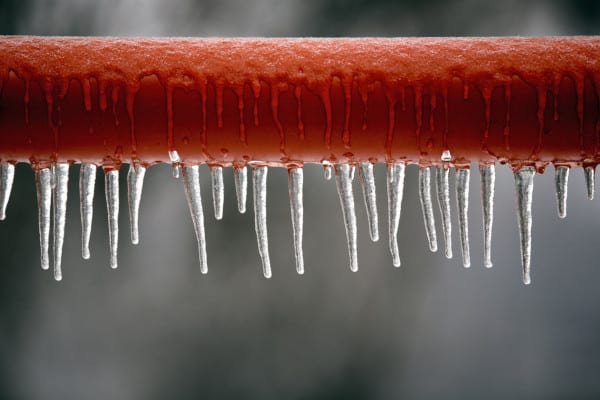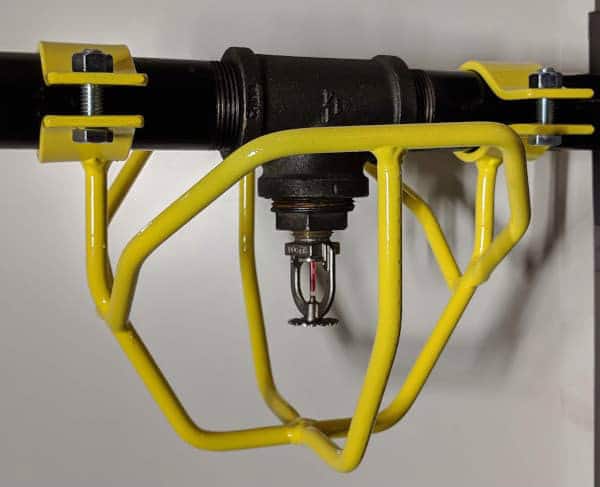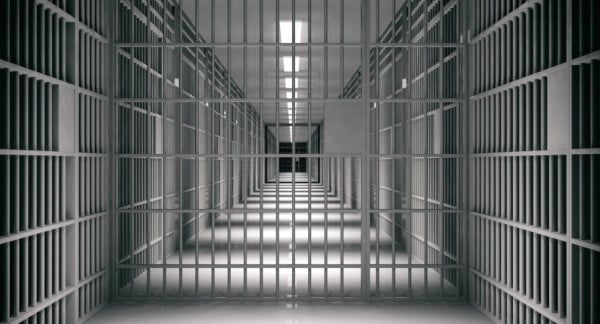Continuous Sprinker Line Leaks What Could Be the Problem
Preventative maintenance and simple tools can stop or prevent fire sprinkler accidents
Automatic fire sprinklers are a critical first line of defense if a fire breaks out. But there's a chance that they can be triggered when there's no sign of a blaze—and a fire sprinkler accident can inflict costly water damage.
This blog examines the most common reasons for accidental discharges of fire sprinklers and system leaks, from unplanned heat sources to vandalism. We also present simple ways to avoid them, including proper maintenance and an inexpensive product that can prevent thousands of dollars in property damage in impact-prone environments: heavy-duty head guards. We also highlight the Shutgun—the fastest, easiest way of shutting accidental sprinkler trips down if they can't be avoided.
Feel free to browse our selection of heavy-duty head guards and Shutguns .
Minor events can cause major damage when a fire sprinkler accidentally trips
Fire sprinkler heads are automatically triggered by a buildup of heat. A liquid-filled glass bulb bursts or a soldered metal link melts at a given temperature, allowing a plug to drop out, followed by water. In most cases, only one or two sprinklers are needed to control a fire, helping properties escape both fire damage and the significant water damage from fire hoses that can spew ten times the amount of water.
But the simple activation process that makes fire sprinklers so reliable during an emergency can also make them vulnerable to some accidental discharges, a term that encompasses everything from human carelessness to deliberate sabotage. Quick response fire sprinklers release 8 to 24 gallons per minute or more, taking less than 20 minutes to dump hundreds of gallons of water on a property if there is a persistent water supply that's not blocked or shut off.
Sneak a peek at our Fire Sprinkler Accident Video Hall of Shame to understand how some activities can quickly lead to cringe-worthy sprinkler mishaps. Or watch how quickly dinner goes up in smoke after a fine-dining establishment's attempt to light a flaming cheese dish accidentally sets off the fire sprinklers. There's no tip big enough to cover this:
Firefighters responded to 33,600 unintentional sprinkler activations in 2014, according to the National Fire Protection Association (NFPA). And it only takes something as minor as a low-temperature sprinkler placed beneath a skylight on a hot summer day or a painter accidentally bumping a sprinkler's fragile bulb to trigger a flood that leads to mold, mildew, ruined walls and flooring, and other pricey damage.
Clean-up costs: an estimated $1,000 for every minute a sprinkler is left running.
Is your property at risk of a fire sprinkler accident?
Sometimes, automatic fire sprinkler act so efficiently that it's not immediately clear there was a fire. This is a very good thing.
And let's also put the risk into perspective: accidental sprinkler discharges are much less costly or frequent than water damage involving a building's plumbing or water supply. In fact, NFPA reports that in at least half of reported non-fire sprinkler activations, water is never released at all. Instead, it simply moves into the system's piping or through a drain and triggers a false alarm.
But if a sprinkler dumps water with no flames in sight, an investigation is warranted to understand why it tripped. Let's dig into the five most common reasons for accidental sprinkler discharges, as well as leaks in the pipe:

1. Overheating causes fire sprinkler accidents
Automatic sprinklers are triggered by high temperatures—and they can't tell the difference between "normal" but intense sources of heat and a fire. That means locating sprinklers too close to heat sources such as unit heaters, skylights, or commercial cooking equipment can inadvertently set them off. Even temporary heat-producing sources like construction lighting or television cameras have been known to open the floodgates.
Fortunately, there's a simple solution for avoiding accidental sprinkler trips in places that run hotter than normal: sprinklers calibrated so their thermal element won't activate until higher temperatures are reached. The 2019 edition of NFPA 13: Standard for the Installation of Sprinkler Systems lays out specific scenarios where higher-temperature-rated sprinklers should be installed to avoid accidental discharges:
From the 2022 edition of NFPA 13
9.4.2.5 The following practices shall be observed to provide sprinklers of other than ordinary temperature classification unless other temperatures are determined or unless high-temperature sprinklers are used throughout, and temperature selection shall be in accordance with Table 9.4.2.5 (a), Table 9.4.2.5 (b), and Figure 9.4.2.5:
(1) Sprinklers in the high-temperature zone shall be of the high-temperature classification, and sprinklers in the intermediate-temperature zone shall be of the intermediate-temperature classification.
(2) Sprinklers located within 12 in. (300 mm) to one side or 30 in. (750 mm) above an uncovered steam main, heating coil, or radiator shall be of the intermediate-temperature classification.
(3) Sprinklers within 7 ft (2.1 m) of a low-pressure blowoff valve that discharges free in a large room shall be of the high-temperature classification.

(4) Sprinklers under glass or plastic skylights exposed to the direct rays of the sun shall be of the intermediate-temperature classification.
(5) Sprinklers in attics (peaked or flat) shall be of the intermediate-temperature classification.
(6) Sprinklers in enclosed show windows shall be of the intermediate-temperature classification.
(7) Sprinklers protecting commercial-type cooking equipment and ventilation systems shall be of the high- or extra-high-temperature classification as determined by use of a temperature-measuring device.

(8) Sprinklers protecting residential areas installed near specific heat sources identified in Table 9.4.2.5 (b) shall be installed in accordance with Table 9.4.2.5 (b).
(9) Ordinary-temperature sprinklers located adjacent to a heating duct that discharges air that is less than 100° F (38° C) are not required to be separated in accordance with Table 9.4.2.5 (a) or Table 9.4.2.5 (b).
(10) Sprinklers in walk-in type coolers and freezers with automatic defrosting shall be of the intermediate-temperature classification or higher.
(11) Sprinklers in closets containing ventless clothes dryers shall be of the intermediate-temperature classification or higher.
Keep this in mind, as well: If new heat sources are added to a property, fire sprinklers may also need to be adjusted.
2. Freezing temperatures cause leaks
This one doesn't always involve an accidental sprinkler head activation, per se. But it can certainly put a lot of water on the floor. Most sprinkler systems are wet pipe systems, meaning water constantly fills their pipes. And if even a small portion of the system is exposed to freezing temperatures during an unexpected cold snap or a power outage that leaves a building without heat, ice can form in the piping.
Frozen water expands by about 10 percent, exerting thousands of pounds of pressure that can break fittings, crack pipes, and force valve caps open. When the temperature finally warms and the ice melts, leaks or even full-blown system trips can result.
Adding a listed anti-freeze solution to the pipes, using electric heat tracing, or increasing insulation can help avoid damage if sections of pipe are exposed to freezing temperatures. But if heating is interrupted to a wet sprinkler system for more than a few hours and the ambient temperature plummets toward 40° F—the temperature when ice crystals begin to form—draining the water from the sprinkler pipes might become necessary.
It's wise for property owners to check the area that houses the sprinkler system for improperly sealed doors and windows, cracks, loose siding, or other defects that could let wintry weather in and lead to frozen pipes.

Dry sprinkler systems are installed to maintain reliable automatic fire protection in places regularly prone to freezing temperatures. They avoid the frozen pipes that render climate-exposed wet systems useless in cold weather by relying on pressurized air or nitrogen to hold back the water supply at a dry pipe valve located in a heated space.
But even dry sprinkler systems risk damage caused by freezing if water pools in their pipes from condensation or someone fails to adequately drain the system after annual testing. And if ice causes the pipes to crack, the change in air pressure can trip the dry pipe valve.
NFPA 13 mandates precautions to ensure that dry sprinkler systems are drained of water before cold weather starts. These range from only using sprinkler heads listed for dry applications to requiring installers to slope dry sprinkler piping at a specific pitch.
Preaction fire sprinkler systems have similarities with dry systems, but go even further to prevent accidental discharges. They typically require two separate events before releasing water, such as the activation of the sprinkler head and separate detection of flame, heat, or smoke.
Interested in learning more about dry sprinkler systems? Read part one in our dry sprinkler series.
3. Fire sprinkler manufacturing defects and mechanical damage
The odds of a manufacturing defect leading to unwanted fire sprinkler discharges are astronomically low: about 1 in 16 million. But that doesn't mean they don't occur.
After the failure of a dynamic O-ring water seal was linked to a deadly nursing home fire, the now-gone Central Sprinkler Co. recalled more than 35 million sprinkler heads between 2001 and 2007—one of the largest replacement programs in the history of the Consumer Product Safety Commission.
Fire sprinkler manufacturers regularly test sprinklers before they are sold, usually at two or three times the expected operating pressures. An acceptance test is also performed right after systems are installed to ensure that they work as expected.
But unfortunately, damaged or defective fire sprinklers do occasionally make their way into service, and it's usually because of damage that occurs after they are manufactured. Quick-response sprinklers are especially vulnerable to damage during shipping and installation, as the components that heighten their sensitivity also make them a little more fragile.
Regular inspection and testing are key to catching damage to your sprinkler system that could cause it to malfunction. But if all other potential reasons for a fire sprinkler accident have been ruled out, it may be time to contact your sprinkler's manufacturer for professional analysis.
Mechanical damage is a leading cause of accidental sprinkler discharges and includes something as simple as over-tightening a sprinkler head. The components of a fire sprinkler system are joined together like a tightly coiled spring, and the impact from something like an errant basketball can knock them apart and pop open the sprinkler. If the entire sprinkler head is ripped off—say, by a forklift—water will gush even faster, potentially dumping hundreds of gallons in minutes.
But smaller, unseen impacts can be just as serious, setting the stage for the sprinkler to unexpectedly release weeks or even months after the damage is done. Careful handling is essential during installation, and the importance of using the proper fire sprinkler wrenches can't be emphasized enough. Manufacturers create specific wrenches for specific sprinklers. And using an alternate wrench either won't work at all or vastly ups the possibility of slippage damaging the sprinkler's operating mechanism or causing parts to loosen over time.
Heavy-duty fire sprinkler head guards can prevent accidental damage in impact-prone environments, such as gymnasiums, warehouses, construction sites, and recreational centers. NFPA 13 requires listed head guards for impact-prone sprinklers. But while standard sprinkler cages can defend against small or slow-moving objects, they are no match for hard hits.

Heavy-duty head guards can completely repel many hard impacts or slow even-harder ones by creating a "crush zone." They can be installed over existing fire sprinklers and cages via two jig-assembled clamps that attach directly to the sprinkler system's piping, further boosting their strength vs. standard head guards, which attach to the head. These head guards come in bright colors that make the sprinklers hard to miss, as well as standard choices like white and black.
Since they are not "listed," they typically shouldn't protect NFPA-compliant fire sprinkler systems alone without approval from the authority having jurisdiction (AHJ). But as a complement to smaller, existing cages or a temporary solution on a job site, they can save property owners from the incredibly costly water damage of a fire sprinkler accident.
4. Significant corrosion will cause leaking pipes
Corrosion has long kept the fire protection industry up at night with the potential to cause extensive damage. While dry sprinklers suffer the highest risk, any system that mixes metal, water, and oxygen creates a scenario for electrochemical corrosion to occur. And when it does, its orangey-red rust eats away at the metal pipes from the inside, boring holes the size of pins or even pennies.
At the right temperatures, this "corrosion triangle" also creates an ideal breeding ground for microbiologically influenced corrosion (MIC), obstructing pipes with a crust of tubercules, creating holes, and degrading flow characteristics if loose scale or rust plugs sprinklers and valves.
A Potter Corrosion Solutions report promoted by the NFPA asserts that 73 percent of dry sprinkler systems suffer significant corrosion issues after 12.5 years. If discovered in time, it's possible to fix the failing pieces of pipe. But pinhole leaks that are discovered in a section of pipe can be just a minor symptom of a rotting system hidden behind walls or within the ceiling. Left untreated, corrosion will weaken sprinkler system parts enough to cause leaks and unintentional activations of dry systems.
Regular inspection and testing of sprinkler systems are critical to catching corrosion at its earliest stages and preventing costly damage—or worse, system failure during a fire. A growing trend toward stripping the pressurized air from dry sprinklers and replacing it with nitrogen is also dramatically increasing the lifespan of dry piping.
Nitrogen is an inert gas, meaning it doesn't undergo the same chemical reactions that lead to electrochemical corrosion. Creating an oxygen-free environment in sprinkler pipes enables them to last an average of 5.3 times longer regardless of whether water is present, according to Potter Corrosion Solutions research.

5. Deliberate sabotage of fire sprinklers
From insurance fraud to vandalism to not-so-funny pranks, deliberate sabotage is the final leading cause of accidental sprinkler discharges. Headlines are filled with tales of sprinklers that caused mayhem after they were intentionally set off, and some environments such as prisons and mental health facilities are especially prone to deliberate sabotage.
A 15-year-old student was charged with first-degree criminal mischief and falsely reporting an incident in connection with the activation of a fire sprinkler in a bathroom at his Danbury, CT high school. A Minnesota Security Hospital patient faced felony property damage charges after breaking off two fire sprinkler heads and causing $2,800 in water damage. And at least 21 inmates over 16 months at the Vanderburgh County Jail in Indiana were accused of vandalizing fire sprinklers in their cells, flooding floors and forcing evacuations.
In fact, the risk of ongoing vandalism to sprinkler heads is a significant reason prisons delay installing fire protection systems, fearing the substantial costs of clean-up. But choosing to go without creates an even bigger risk in an environment where inmates trapped behind bars may be unable to escape a raging fire. About 600 fires occur in prisons and jails every year, and one out of four is intentionally set.
Placing fire sprinklers in hard-to-reach spots and using institutional sprinkler heads can deter acts of sabotage by reducing access to fragile parts. But these and other facilities also need a way to shut the water off fast when a sprinkler discharges and there's no fire.

Shutguns avoid costly damage from accidental or malicious sprinkler trips
Improperly triggered fire sprinklers can happen—and waiting for the fire department or maintenance to turn the water off can lead to tens of thousands of dollars in water damage. Fortunately, an inexpensive tool can help you immediately stop the deluge while restoring the sprinkler's ability to fight fires. And it's so simple to use that you don't need to be a professional to operate it.
The Shutgun seals the opening in an activated or damaged fire sprinkler and stops the flow of water at the source. The device also includes a heat-sensitive element that detaches when exposed to high temperatures, allowing the sprinkler head to function as usual in a real fire emergency. While the system will still require repair after an accidental discharge, using a Shutgun may leave your property as fire-safe as it was before the sprinkler accidentally activated, and with much less water damage.
Shutguns can be easily operated with one hand, enabling you to keep a firm grip on a ladder while you stop the water from gushing. The sheared head model can rectify more serious situations, forming a seal over the top of severely damaged sprinkler heads. Other Shutguns specifically shut down the flow of water from concealed sprinklers and institutional sprinklers.
Watch this video for step-by-step instructions on using a Shutgun:
Buying the right Shutguns for your property to potentially save thousands after a fire sprinkler accident is easy math.
Browse our selection of Shutguns and accessories.
Or check out our inventory of heavy-duty head guards and standard head guards.
Questions about accidental sprinkler discharges, Shutguns, heavy-duty head guards, or other QRFS products? Call us at +1 (888) 361-6662 or email [email protected].
This blog was originally posted at blog.qrfs.com. If this article helped you learn how to avoid and shut down accidental sprinkler discharges, check us out at Facebook.com/QuickResponseFireSupply or on Twitter @QuickResponseFS.
Source: https://blog.qrfs.com/213-fire-sprinkler-accidents-the-top-5-causes-of-discharges-and-leaks/
0 Response to "Continuous Sprinker Line Leaks What Could Be the Problem"
Post a Comment